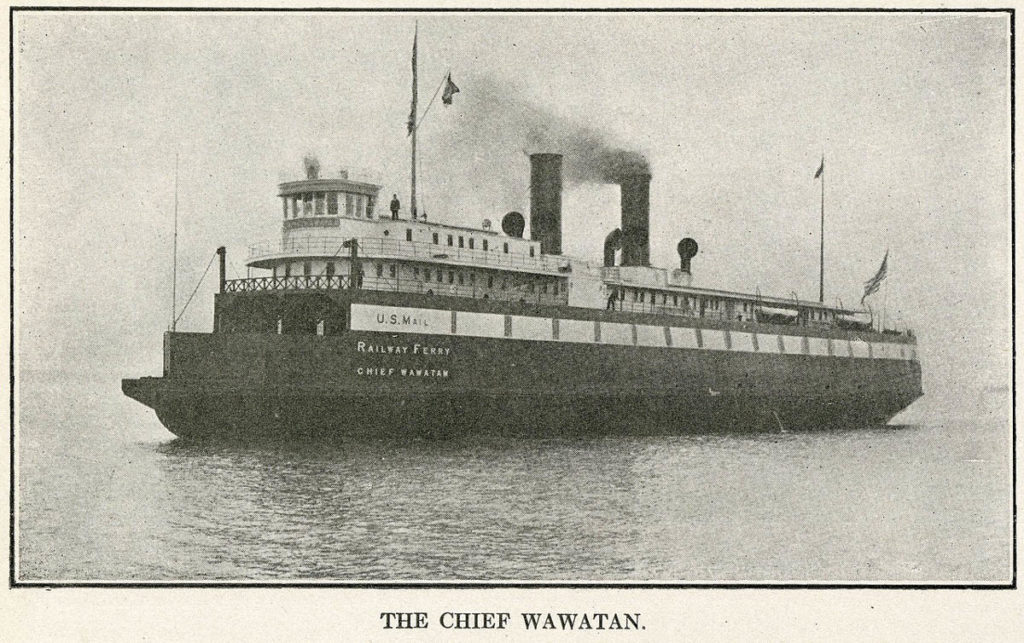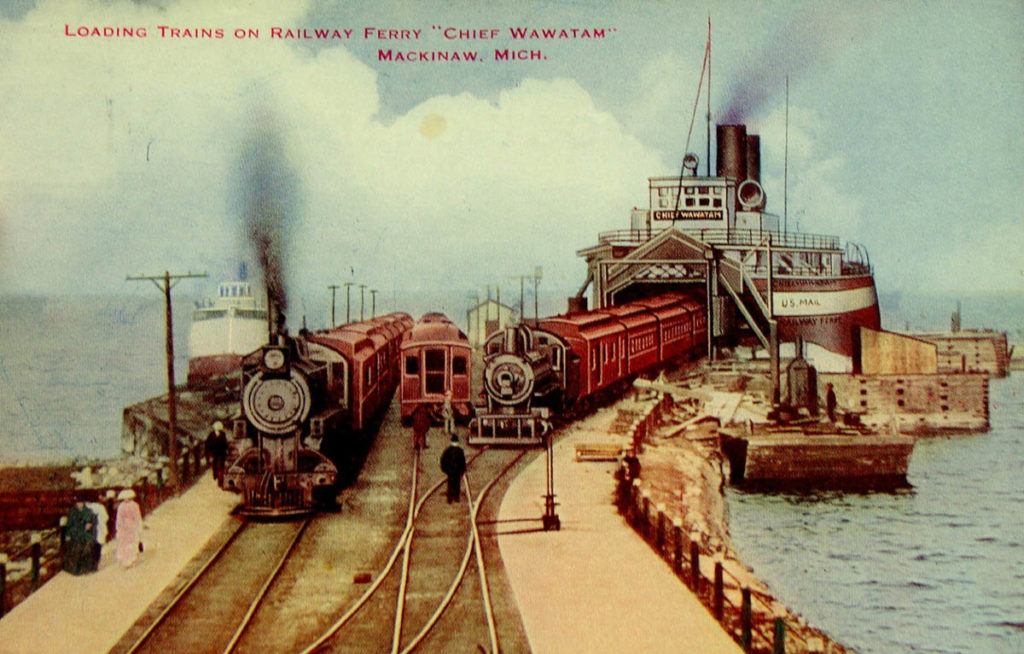Between 1911 and 1984, the SS Chief Wawatam was a coal-fired train ferry and icebreaker that served in the Straits of Mackinac. Her home port was St. Ignace, Michigan, and she commuted between that port and Mackinaw City, Michigan, for the majority of her working life.
The ship was named after a 17th-century Ojibwa chief who is said to have rescued trader Alexander Henry during the Ojibwa rebellion at Michilimackinac in 1763. In Wawatam Park in Mackinaw City, Michigan, a wooden statue of the chief stands by the harbor. It was carved out of a one-hundred-year-old white pine tree.
Frank E. Kirby, a Great Lakes marine architect, designed the Chief Wawatam. The Toledo Shipbuilding Company launched her on August 26, 1911, in Toledo, Ohio, and she entered service for the Mackinac Transportation Company on October 18, 1911. The Duluth, South Shore and Atlantic Railway, the Grand Rapids and Indiana Railroad, and the Michigan Central Railroad, all of which served the Straits of Mackinac, formed the Mackinac Transportation Company. On rails bolted to the ferry ship’s deck, the vessel could hold up to 26 railroad cars.
The Chief Wawatam measured 338 feet in length and 62 feet in beam. Coal-fired triple-expansion steam engines powered her three propellers, two in the stern and one in the bow. The Chief is thought to be the last coal-burning, hand-fired boat in commercial operation on the Great Lakes.
Because of the strong ice accumulation in the Straits of Mackinac during the winter, year-round train ferry service was a major challenge. The bow propeller on the Chief Wawatam was built to crack ice floes by maneuvering the boat and sucking water out from under the ice, allowing it to be dissolved by gravity.

Shippers’ demand for the Mackinac Transportation Company’s Straits of Mackinac train ferry service decreased after the Mackinac Bridge was built in 1957. The Chief sat in Cheboygan and Mackinaw City for several years after cross-Straits of Mackinac railroad car ferry service ended in 1984.
In 1989, she was towed to Sault Ste. Marie, Ontario, where she was cut down for use as a barge. The barge Chief Wawatam was confirmed to be scrapped in November 2009. She was one of the few survivors of the Great Storm of 1913 at the time of its last scrappage.
One of the Chief’s triple-expansion engines was saved from salvage and placed on display in 2005 at the Wisconsin Maritime Museum in Manitowoc, Wisconsin, after being restored to working order. The Mackinac Island State Park Commission in Mackinaw City preserves other ferry items such as the whistle, paddle, telegraphs, and furniture.







